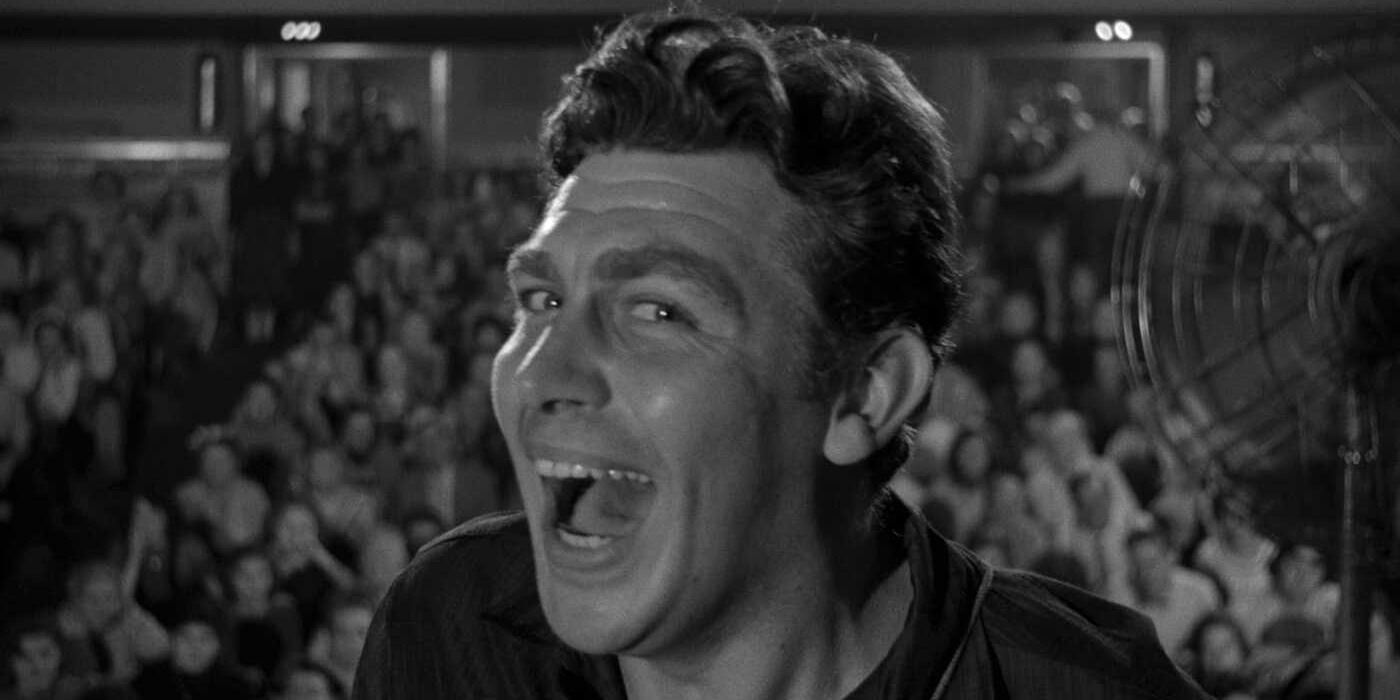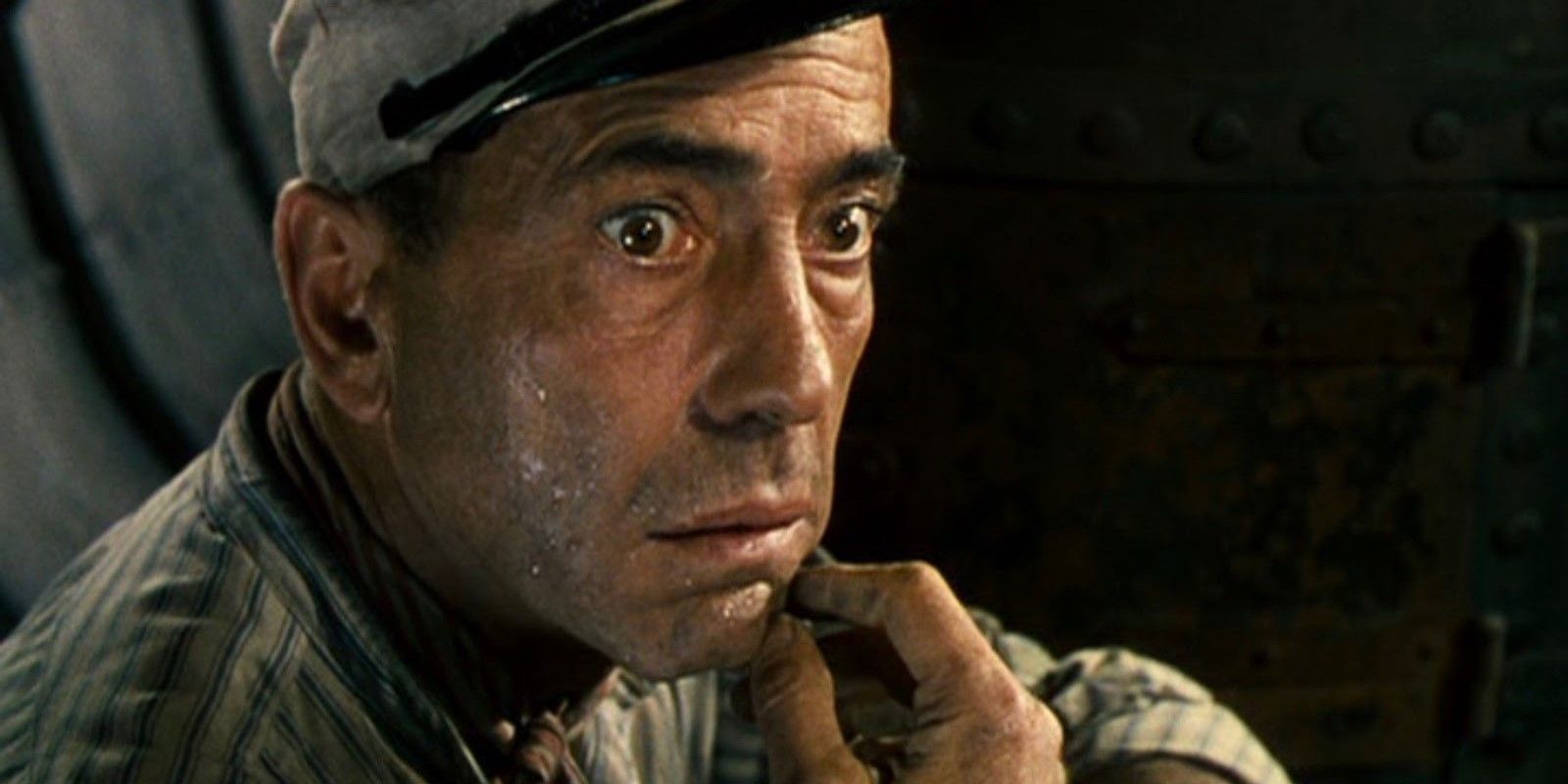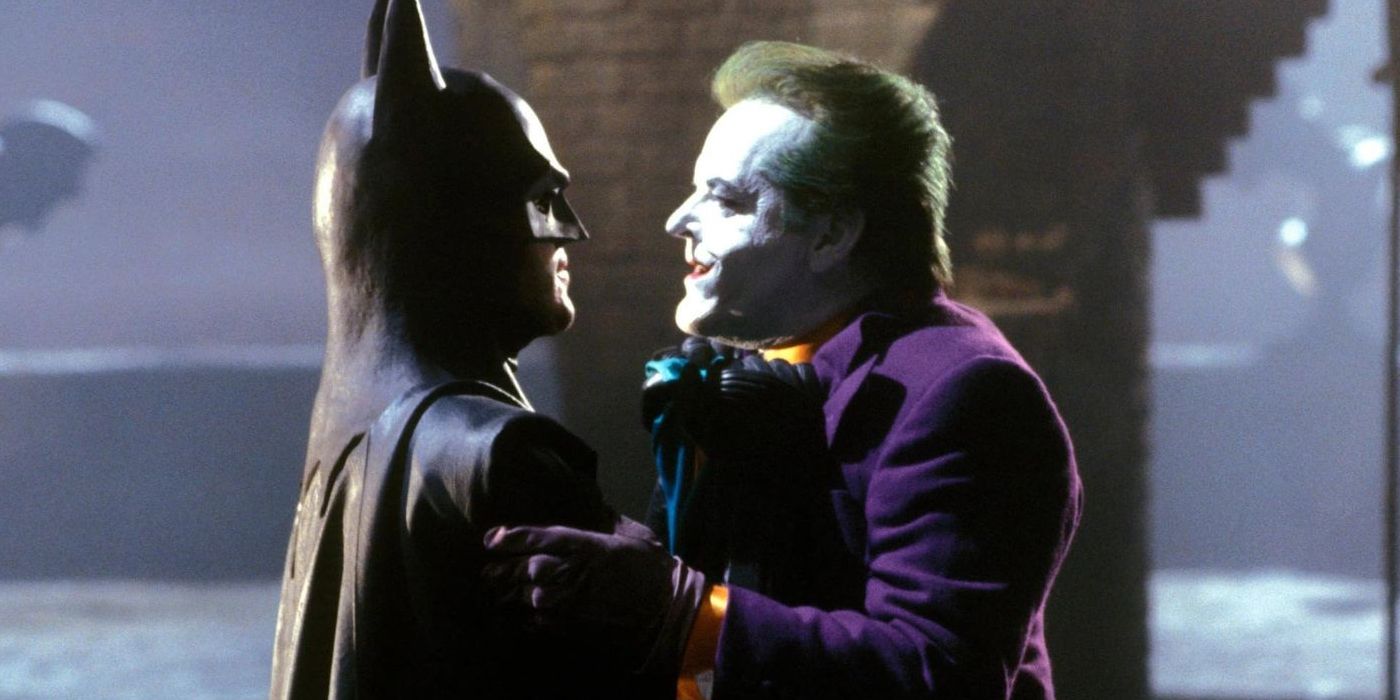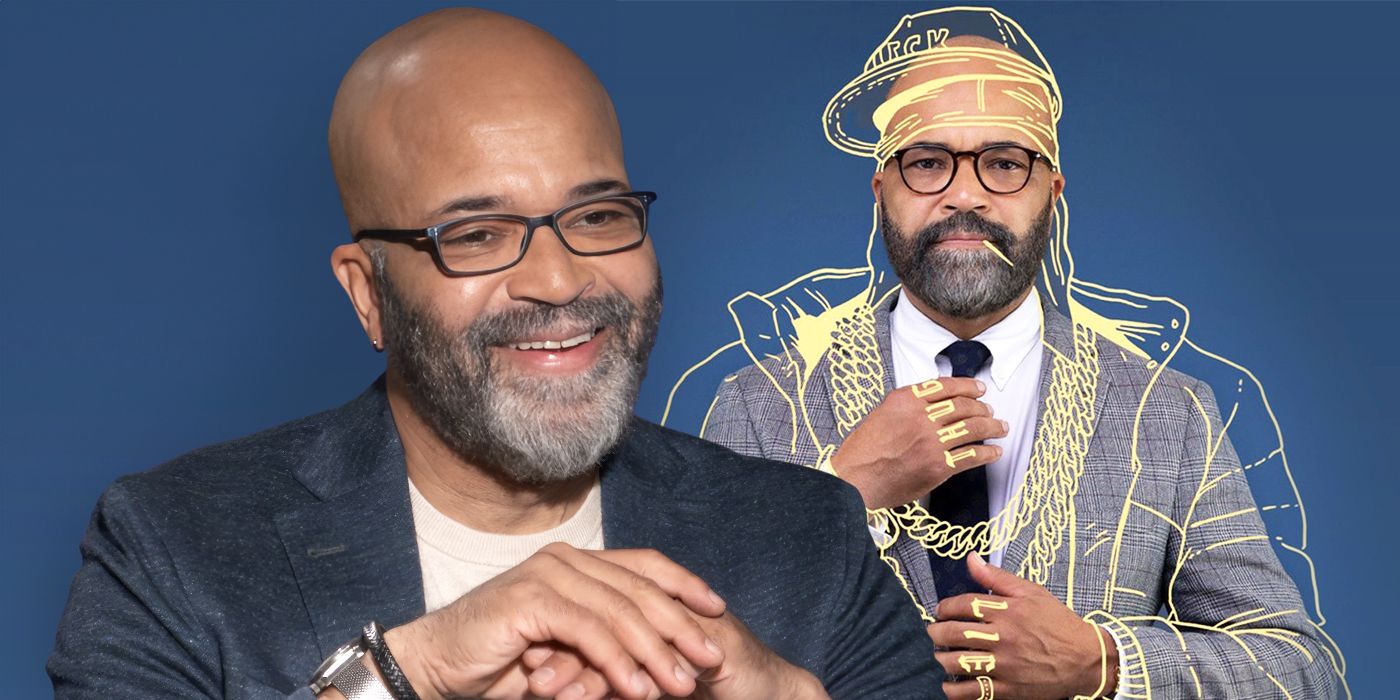The Big Picture
- Andy Griffith’s performance in A Face in the Crowd showcases his range as an actor, portraying a complicated and rage-filled character that contrasts with his lovable sitcom persona.
- The film explores the weaponization of media and the dangerous influence of celebrities, offering a prescient warning about the manipulation of audiences for personal gain.
- A Face in the Crowd serves as a cautionary tale, urging audiences to approach public figures with skepticism and to recognize the dual nature of celebrity personas, highlighting the deception that can occur behind a charming and trusted image.
While Andy Griffith is best known as the charming sheriff of Mayberry on The Andy Griffith Show, he first found success in the film industry playing a much darker, more complicated character. Following a career as a stage actor, Griffith’s first movie role was in Elia Kazan‘s 1957 film, A Face in the Crowd. Griffith portrays a man named Larry Rhodes who is discovered by a radio journalist, Marcia (Patricia Neal), in an Arkansas jail. Marcia records him performing a song and finds that Rhodes becomes an instant hit with the listeners. Taking him to the station, Rhodes was given his own radio program, which quickly skyrocketed in popularity. Now dubbed “Lonesome” Rhodes, Griffith’s character struggled to manage his newfound fame with humility or grace. The film is a biting satire of celebrity influence and the corruption of wealth and power. Griffith, playing a character who undergoes a transformation from a charming drifter to a raging, arrogant performer, gives a powerful performance that sits in stark contrast to his lovable sitcom persona.
The film features some of Griffith’s best work, and remains an important story for how it addresses the ways in which media can be weaponized to influence audiences. While A Face in the Crowd may not be as well remembered as Kazan’s seminal works, On the Waterfront and East of Eden, the film has revealed itself to be an incredibly prescient work, one that predicted media and political trends which have culminated in a great shift in American cultural discourse. The film, now a part of the Criterion Collection, is being reappraised on the strengths of the lead performance and the thematic content, which dolls out a number of warnings America unfortunately has yet to heed.
A Face in the Crowd
A female radio reporter turns a folk-singing drifter into a powerful media star.
- Release Date
- May 28, 1957
- Director
- Elia Kazan
- Cast
- andy griffith , Patricia Neal , Anthony Franciosa , Walter Matthau , Lee Remick
- Runtime
- 125m
- Main Genre
- Drama
Andy Griffith Tapped into Rage for ‘A Face in the Crowd’
Lonesome Rhodes is a complicated character. While the Andy Griffith most audiences know and love was a kindly character, most noted for his fatherly qualities and ability to hand down life lessons, A Face in the Crowd shows a different side to Griffith’s acting talents. In an archived newspaper clipping from 1956, Griffith explained that he found the transition from stage acting to performing on film difficult. The main factor was that, in a theatrical production, the emotional arc of the character played out in real time. Griffith compared this to the process of film acting, saying “… in making a movie, you have to be able to turn your emotions on and off like tap water. I found that hard to do.” To quickly find the intense emotions required for Lonesome Rhodes’ frequent outbursts, Griffith requested some old chairs be brought to the set, and he would destroy them in order to prepare for his scenes.
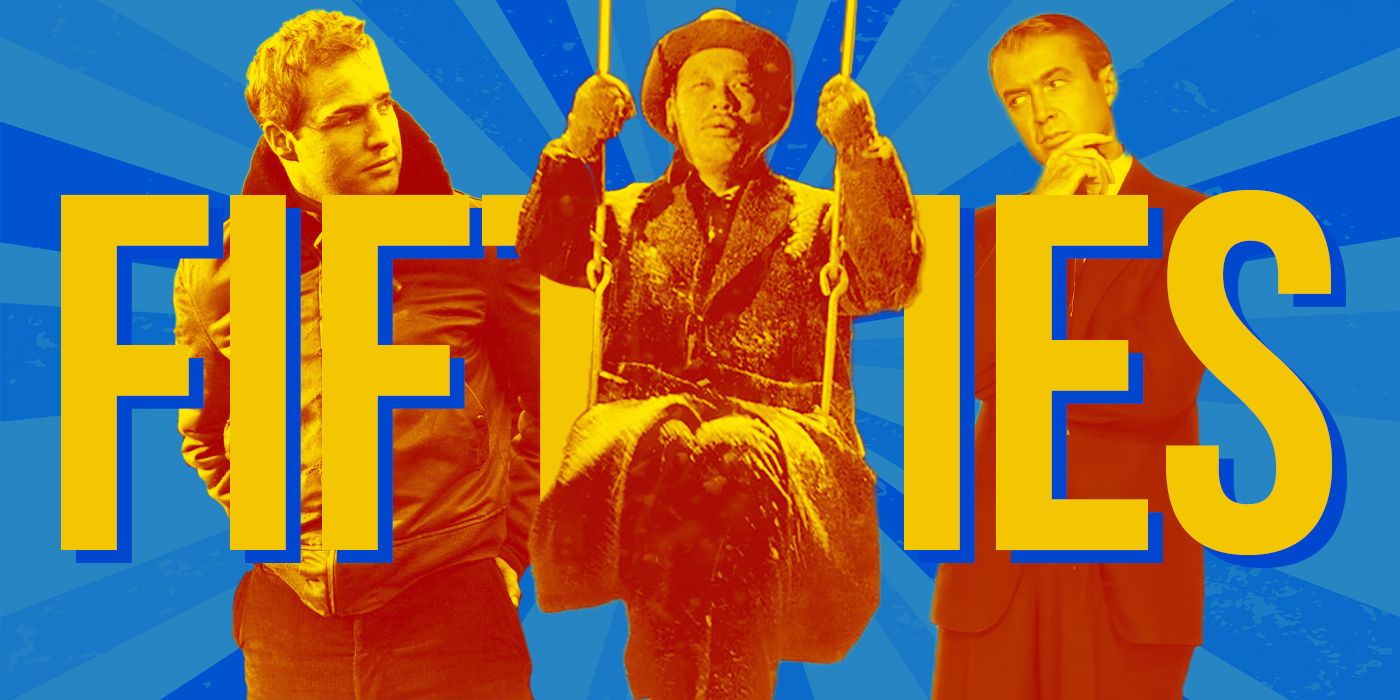
The 30 Greatest Movies of the 1950s, Ranked
From ‘All About Eve’ to ‘Ikiru’ to ’12 Angry Men,’ this is Collider’s ranking of the greatest movies of the 1950s.
Griffith’s performance was amazing from the outset, but the film works even better if you are well acquainted with his family sitcom persona, because he is a personality audiences inherently trust. As the warmth of Sheriff Andy Taylor radiates through the film’s opening act, it becomes harder to watch Lonesome Rhodes increasingly consumed by rage and egomania. It is akin to the quality of experience you get watching Bryan Cranston shed his goofy Hal Wilkerson persona from Malcolm in the Middle and replace it with the depths of evil he reaches as Walter White in Breaking Bad. Cranston took these characters to their respective extremes compared to Griffith’s work, and Griffith did not have these kinds of expectations put upon him in his film debut, but in retrospect, the effect is quite similar.
Whatever Griffith’s concerns might have been about making the transition from stage to screen, it is clear that he was able to work through them in his own way to deliver this stellar performance. Lonesome Rhodes is perhaps the most dynamic, powerful role of his career. Although it is not the work he is most closely defined by, that honor definitely goes to the iconic sitcom which bears his own name, this film should always be a part of the conversation about Griffith’s talents. You will never see Sheriff Andy Taylor the same once you have seen A Face in the Crowd.
Why Is Andy Griffith’s ‘A Face in the Crowd’ Performance So Strong?
As Lonesome Rhodes’ fame continued to increase, his influence over his audience grew. Rhodes began making deals to promote products on his program, to great success. This leads to him being approached in an effort to shift the public opinion of a conservative political candidate. Rhodes rebrands the politician in the same manner that he plays with his own persona, convincing audiences that he is a humble everyman when he is in reality a stiff, unlikable member of the ruling class.
When Marcia sees how far Rhodes has gone in abusing his platform, she decides to turn on a live-microphone over the credits of his program, where audiences hear Rhodes quietly chastising them as “idiots” and speaking negatively of the political candidate he has endorsed. The audience quickly turns on Rhodes, who is left to his own devices. Realizing everyone had left him, Rhodes had a complete meltdown. Marcia leaves with the show’s staff writer, portrayed by Walter Matthau. Matthau, in the film’s final moments, predicts that Rhodes will probably never completely go away, even as his influence and power have dramatically imploded.
It can no longer be ignored that Rhodes’ undoing played out almost identically to The Penguin’s in Tim Burton’s Batman Returns. Danny DeVito‘s grotesque, humorous performance similarly sees him winning over the masses with populist, relatable rhetoric before the mask-off moment comes with a tape recorder revealing him mocking the people of Gotham. Like Rhodes, The Penguin’s malice simply cannot be contained long enough to stay out of his own way. The great fear that comes from the undoing of these characters is that the real-life figures who emulate them are much better at hiding their disdain, that audiences are much worse at noticing it, or that we eventually have gone so far that the mask-off moment is celebrated, as with Homelander in the season three finale of The Boys.
These fictional characters all reflect a very real type of person. We may not have The Penguin or Homelander, but we certainly have many Lonesome Rhodes-type figures out on the airwaves telling people how to think, spend, and vote. Their power extends beyond what many people would care to realize, this is indicative of how ahead of its time A Face in the Crowd was.
A Face in the Crowd is ultimately a movie about con artists. Griffith performs as a character who is himself constantly in a performance mode. His public-facing persona is charming, kind, and approachable as ever. The strength of the performance comes from the dichotomy between that mask of Rhodes and the real man you see behind closed doors. It is a performance that should make us all rethink how we approach the adoration of public figures. In an age of increasing political division, where demagogues fan the flames of a scary culture war, weaponizing a smile or a rageful rant depending on which is most advantageous for the moment, A Face in the Crowd feels like a movie which presciently noted that culture would eventually be dominated by Rhodesian (or even Penguin-like) figures.
Even outside the world of politics, online discourse in terms of how we approach media is becoming increasingly infected with uncomfortable, unhealthy engagements with “stan culture.” People obsessively peer into what can be seen of the lives of massively famous singers, actors, etc. and extrapolate from these public personas a version of the celebrity who is idolized. This idolization will almost always lead to a sense of disappointment or betrayal, because when you do not know someone and you put them up on a pedestal, it is too easy to forget that the person you are worshiping is just that, a person. Some people are bad, some are mean, some are so enamored with their success that they will do anything to stay at the top, forgoing all morals and values. Rhodes was beloved across the nation, but his entire empire was built on lies. Griffith, in this incredible display of acting prowess, greets you with a smile while picking your pocket. The dual nature of this performance brilliantly depicts the artifice behind the image of a celebrity.
A Face in the Crowd is about as overt as a film could be in terms of begging the audience to apply some skepticism, to keep distance from idolizing people when you fundamentally cannot know their true intentions. Kazan’s film spotlights a deceptive figure in American media that may have been infrequent at the time of this film, but in the information age there are Lonesome Rhodes-types all over the place. Few are as charming as Andy Griffith, but they are as dangerous as his character when their influence goes unchecked. As much as A Face in the Crowd is a cautionary tale about the personal destruction that often follows a meteoric rise to stardom, it is also a desperate plea for the audience at home to not fall for the grift.
A Face in the Crowd is available to rent on Amazon Prime Video in the U.S.
Watch on Amazon Prime

